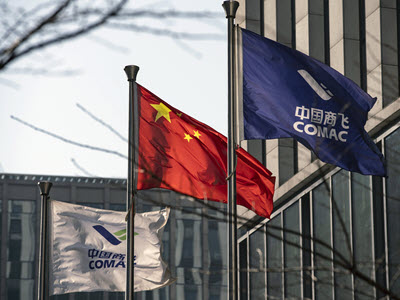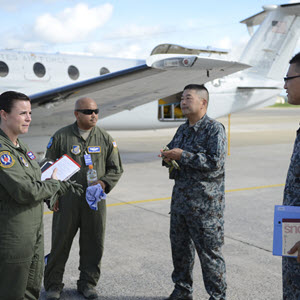Commercialized Militarization
China’s Military-Civil Fusion Strategy
Xi Jinping has identified transforming the People’s Liberation Army into a “world-class military” and leading the world in emerging and disruptive technologies by 2049 as core national goals for China. A key element of his plan for achieving this vision is a whole-of-government effort, overseen by Xi himself, called Military-Civil Fusion (MCF). Elevated to a national strategy in 2014, MCF seeks to increase interaction between China’s civil research and commercial sectors and its military, law-enforcement, and defense industrial sectors. In this interview, Greg Levesque discusses MCF’s historical underpinnings, current conditions, and the implications for the United States and its allies.
What is Military-Civil Fusion, and what is it intended to achieve?
MCF’s core objective is to ensure that proper mechanisms and policies are in place to translate China’s economic and technological achievements into military power. It is as much a philosophy for organizing the national economy as it is a defense procurement mechanism, which is often overemphasized by researchers.
The idea of MCF, although its name has changed a few times, has been present since the founding of the People’s Republic of China (PRC). Mao Zedong and other Chinese Communist Party (CCP) leaders recognized that when managing a state-planned economy, there exists a fundamental question of how resource allocation can support development, not only from both a military and national competitive-advantage perspective but from an economic standpoint as well.
Currently, Chinese leaders are intent on continuing to invest in domestic economic priorities that fuel growth while also funneling those very same investment dollars into industries that support military development. It’s a two-for-one concept or “guns-and-butter strategy.” Beijing will not try to outspend the United States, but the objective remains the same: to build a system of policies and structures that will enable the PRC to rapidly modernize its military and more efficiently mobilize its economy in wartime to wage and win a protracted conflict.
After decades of compounding economic growth following the reform and opening in the 1970s, Chinese leaders are now intent on leveraging modernizations in science and technology, as well as advancements in domestic innovation and production capabilities, to drive national strategic power. Beijing has conducted a wealth of research on how nations ascend to great-power status. One of the primary conclusions is that there is often a fatal mismanagement of state resources in overemphasizing investment in the economy at the expense of the military. Chinese leaders are intent on not making that same error.
What tangible steps have been taken by Beijing or by nonstate actors in advancing MCF?
Since becoming a national strategy around 2014, MCF has gone through a series of adjustments to more clearly articulate its objectives. A significant strategic step occurred in 2017 with the establishment of the Military-Civil Fusion Development Committee (MCFDC). Chaired by Xi Jinping himself, the MCFDC comprises senior leaders from both the Central Military Commission and the Chinese party-state. The formation of the MCFDC was intended to, among other things, use the CCP to “punch through” vested interests, particularly state-owned defense enterprises. And the MCFDC appears to be having the desired effect. It immediately issued clarifications of roles and responsibilities across the government and military as they relate to a strategic MCF doctrine, policy directives around future development, and short- and long-term objectives. Today, almost every provincial and municipal government has formed local-level MCF development committees led by party officials and rolled out development plans.
Another tangible step is the appointment or formation of MCF industrial zones or parks across China focused on developing dual-use innovation hubs. These zones prioritize industries such as shipbuilding and aviation and closely mirror Made in China 2025 strategic industries. In addition, they are becoming hubs for economic mobilization training between commercial firms, PLA offices, and state-owned enterprises (SOEs).
MCF industrial zones, particularly those at the central-government level, have a state-owned defense enterprise as an “anchor,” which allows for ecosystems to be built around these defense enterprises to tap into new innovations and research at companies within the broader industrial park structure. For example, Shanghai has long aimed to develop a leading aviation and aerospace industrial and technological base. What’s interesting is that under an MCF framework, this goal incorporates military and economic mobilization requirements.
The Commercial Aircraft Corporation of China (COMAC) C919 project offers a real-world example of how the PRC blends ostensibly commercial programs to support the development of military capabilities and acquisition of intellectual property. The project is currently overseen by a state-owned aviation enterprise, and its past and current leadership hail from the State Administration of Science, Technology, and Industry for National Defense (SASTIND), including Zhang Qingwei, the previous director of SASTIND and former chair of COMAC, and Jin Zhuanglong, the former deputy director of SASTIND and current general manager of COMAC.
The Zhongguancun Science and Technology Zone in Beijing offers another example. The zone itself has an entire MCF committee focused on taking stock of military defense requirements and identifying where they sit within the park. The committee oversees an MCF industrial park within the zone and built an online platform intended to connect entrepreneurs within the zone working on dual-use technologies with military customers.
Which industries and sectors have experienced tangible growth and development in military and commercial capabilities by virtue of MCF?
Available data on the number of companies that have received certifications to sell to the military shows some growth in vendors. Firms developing new technologies in the aerospace, optoelectronic, and cybersecurity space are also garnering more attention from the military and defense industry groups. But advanced military programs such as weapon systems remain firmly in the hands of state-owned defense groups.
Companies operating in dual-use industries are finding more demand for their products in a military context and also receiving financial subsidies and benefits from central and local governments. One example is Shanghai’s Minhang National MCF Zone. which is focused on aviation and aerospace. In Minhang, there are over 1,700 companies (largely small and medium-sized enterprises) designated as “high-tech enterprises.” With that designation come financial benefits in the form of subsidies. The commercial benefits of MCF thus go beyond the opening up of the defense market or certification to become a defense contractor. It can generate financial rewards if the government deems that a company is developing technology in an industry of strategic importance.
Shanghai Tuopu Numerical Control Technology Company, a MCF enterprise manufacturing high-end intelligent equipment in the aerospace industry, offers a case in point. Shanghai Tuopu cooperates closely with a handful of state-owned defense groups, including COMAC, Chengdu Aircraft Corporation, and Tianjin Long March Rocket Corporation, to develop exterior skins for planes and missiles. It has yet to achieve anything near profitability and has been buoyed by government subsidies and research funds. From my perspective, one of Shanghai Tuopu’s core value propositions is reducing or removing China’s dependence on U.S. and European manufacturers for critical inputs in the aerospace and aviation manufacturing capabilities. The company recently announced that it had achieved a “breakthrough” in precision machining of fuselage skins for aircraft, enabling the indigenization of the manufacturing process for exterior skins. These achievements were made while the company was sued for intellectual property infringement by the French company Dufieux. Its ability to indigenize the manufacturing processes for these fuselage skins brings home the point that MCF is effective. Shanghai Tuopu has allegedly closed that technology gap and now has a domestic capability.
What are some similarities and differences between military-civil integration in the United States and China?
Every military around the world is attempting to tackle structural issues that hinder its ability to rapidly identify, procure, and operationalize emerging technologies in industry to gain a competitive advantage. The U.S. Department of Defense has sponsored a number of entities with the goal of identifying and procuring emerging technologies developed in the private sector. These include the Defense Innovation Unit as well as venture-esque investment vehicles like AFWERX.
There are certainly some similarities with China, including MCF-focused investment funds, but the biggest difference, in my view, is the state-directed nature of the Chinese strategy. The U.S. Department of Defense does not tell companies that they need to participate in certain initiatives or which dual-use technologies to develop, though it of course does send market signals. Moreover, MCF is not focused just on improving military procurement structures. China’s maritime militia and the BeiDou satellite program also represent the strategy and even present challenges for observers in understanding its true nature. For example, the SOE-led island-building campaigns in the South China Sea allowed China to cloak its military activities in commercial expansion. These practices are also found in China’s economic activity in other parts of the world.
Another similarity is how both countries understand science and technological innovation. We are in an era of technological revolution where core emerging technologies such as AI and quantum computing do not yet have a defined winner. This past month, Kurt Campbell, the White House Asia coordinator, identified emerging technologies as the core domain of U.S.-China competition. That’s the battlespace we are in, and companies are on the front lines. And as the development of these technologies takes place in industry, national governments around the world are looking to leverage innovations in the commercial domain for dual-use purposes.
What challenges remain for MCF?
Beijing will continue to prioritize optimizing the system in order to leverage commercial technological advances to support military ends. The core challenge and decisive factor is whether China can develop indigenous capabilities in areas where it is currently facing challenges, particularly as the West remains the dominant player in innovating and developing truly frontier technologies that have the potential to shift the balance of power in both economic and military terms. If China fails to indigenize emerging and strategically important core technologies, it will begin to encounter issues and questions surrounding the efficacy of MCF as a strategy. So, as the West increases the barriers of entry for Chinese firms and tightens export controls, Beijing will find itself forced to further optimize MCF’s framework to compensate for these challenges and indigenize domestically.
Why include SOEs that have faced criticism for their lack of innovation in a strategy that draws on more dynamic commercial firms to stimulate competition and spur innovation?
China has no other option. Xi’s reinvigoration of defense industry groups, including through consolidating enterprises, has solidified the role of SOEs in the defense industry. There will be opportunity costs, but Chinese SOEs generally function as a type of vanguard, and the system is deliberately being consolidated in such a fashion. Although MCF may not be as dynamic and fast-paced, Beijing views the strategy within the broader framework of efforts to rapidly modernize the military and mobilize the economy during a time of conflict to successfully wage a protracted war.
Greg Levesque is the Co-founder and CEO of Strider, a venture-backed technology firm, where he leads and executes the company’s strategic vision. A leading expert on economic statecraft, Mr. Levesque has testified before the U.S.-China Security and Economic Review Commission and worked closely with U.S. and European government agencies and Fortune 500 companies to identify, assess, and respond to state-sponsored threats. He is fluent in Mandarin Chinese.
This interview was conducted by Jeremy Rausch, an intern with the Research and Political and Security Affairs groups at NBR.



